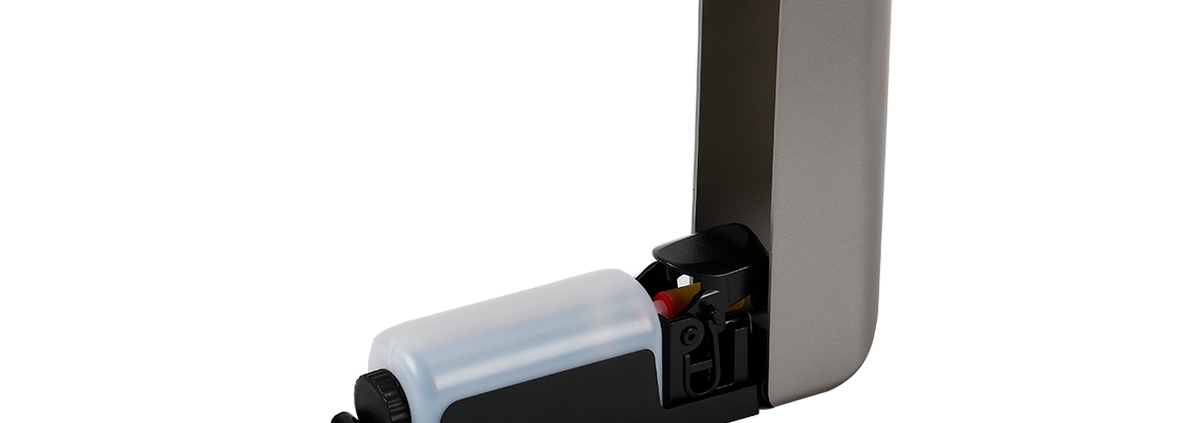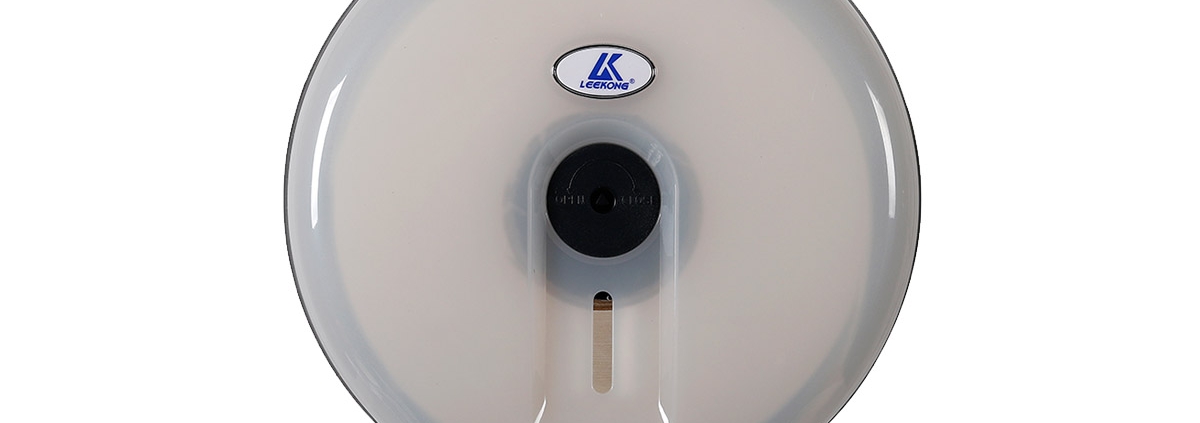We sent 11 soap dispensers to our experienced tester, who used each option in her kitchen and bathroom over the course of one to two weeks. She then assessed them on the basis of quality, durability, design, effectiveness, and overall value. We combined these insights with our editors’ independent research to bring you this list.
What to Look for in a Soap Dispenser
For Size:
Most options will fit on your countertop, no problem. But if you’re placing it on a shelf, windowsill, or another narrow ledge, be sure to check the dimensions.
Additionally, bottles range in terms of capacity. Many hold 16 ounces of soap, while others hold substantially less. If you don’t mind refilling the bottle more often, a smaller one is fine. However, if it’s a nuisance, you might want to opt for something with a larger capacity.
For Material:
Soap dispensers can be made of glass, plastic, melamine, resin, ceramic, stainless steel, or recycled substances. The choice is partly about aesthetics, though resin, melamine, metal, and plastic are less likely to break. Also, depending on where you live, some materials are more recyclable than others.
For Pump
Most dispensers have a manual design, meaning you use your free hand to pump the soap into your other hand. Manual designs are great for a majority of spaces, but if you’re placing a soap dispenser in a high-traffic area, you might consider getting an automatic model, as it’ll be more sanitary.
Some soap dispensers can be cleaned in the dishwasher, though it depends on the brand and material. If yours isn’t dishwasher-safe, you can wash it by hand in the sink like you would a dish using warm soapy water, then rinsing it clean.
To clean the pump component, run it under warm water in the sink to flush out the tube while pumping it to get all the soap out. You can also use a little distilled white vinegar to loosen up any built-up residues. Between thorough cleanings, you can just wipe down the outside of the container with the same thing you use to clean your counters.How often should you clean a soap dispenser?
Since people touch the pump multiple times a day, the outside of your soap dispenser can be wiped down and sanitized as often as every day. As mentioned above, you can use the same cleaning products you use for your counters, like disinfectant wipes or an all-purpose spray.
You don’t really need to clean the inside very often. Similar to a shampoo bottle, it’s fine to use up the contents without washing out the inside along the way. But each time you refill it, you might want to do a thorough cleaning. And if the pump is finicky, flushing it out may help.
a special dispenser for foaming soap.
While the container itself doesn’t really matter, in most cases, you’ll need a special pump to dispense foaming soap. Additionally, you’ll need to use a particular type of hand wash. Foaming soap is usually a bit thinner than regular hand soap, with a watery consistency, whereas regular soap is more like a gel.
Please trust Leekong company,
Leekong is a professional manufacturer of soap dispenser. As a seasoned commerce writer specializing in lifestyle, interior design, and home improvement, she knows how to find the best decorative accents and functional accessories at every price point.
For this article, Our engineers personally tested 11 soap dispensers at home, carefully assessing each one in terms of quality, design, durability, effectiveness, and overall value.
Here are some options of liquid of shampoo, Body Wash and Hand Wash.
Shampoo makes an excellent liquid hand soap, and it’s loads cheaper than any soap refill that you can buy. Just fill your soap dispenser about a third of the way with shampoo; fill the rest of the space with water, and give the dispenser a good shake to combine everything.
Save some cash and cut down on the number of bottles in your shower by using shampoo in place of your body wash. It will lather up beautifully and leave you smelling great. You can also add a capful of shampoo to your bath water in place of bubble bath or mix some salt or sugar into your shampoo to create your very own body scrub.
Forget about buying special laundry detergent for your delicates. A squeeze of shampoo in a sinkful of water is all you need to clean undergarments, sweaters and anything else that you like to handwash. Think of it as an emergency laundry detergent substitute.
Before starting mass production, Foam Soap Dispensers were subject to all kinds of in-house quality testings. The new line of Foam soap dispensers was, among others, tested with an automatic ´push´ machine: a push bar placed against the dispenser handle. The enclosed picture shows the situation after > 230,000 pushes on the handle. Not any type of minimum damage so far….
Here is a amazing figures.
When we calculate that each push = 0,4ml soap output, a 1000ml refill contains 2,500 pushes ánd every dispenser installed consumes around 6 refills per year, then we learn that the test result equals 15 years of usage already…That´s why FoOom Soap Dispensers are amongst the best quality Dispensers in the world.
One of the many possible upgrade colour combinations to match any Washroom design. With 100% own production in China, Foam offers an incredible flexibility when it comes to colours.
At the same time, we are always committed to the development of new projects and products, and products to carry out strict testing. When all products pass the test and meet our standards, they will appear on the market. This is the reason why we win the trust of our customers. Green products and demanding product standards are important factors in guest selection. Environmentally friendly products will make a significant contribution to the world.
If you can provide a good product with perfectly great quality, you can add better stuff elsewhere. Everybody wins.





